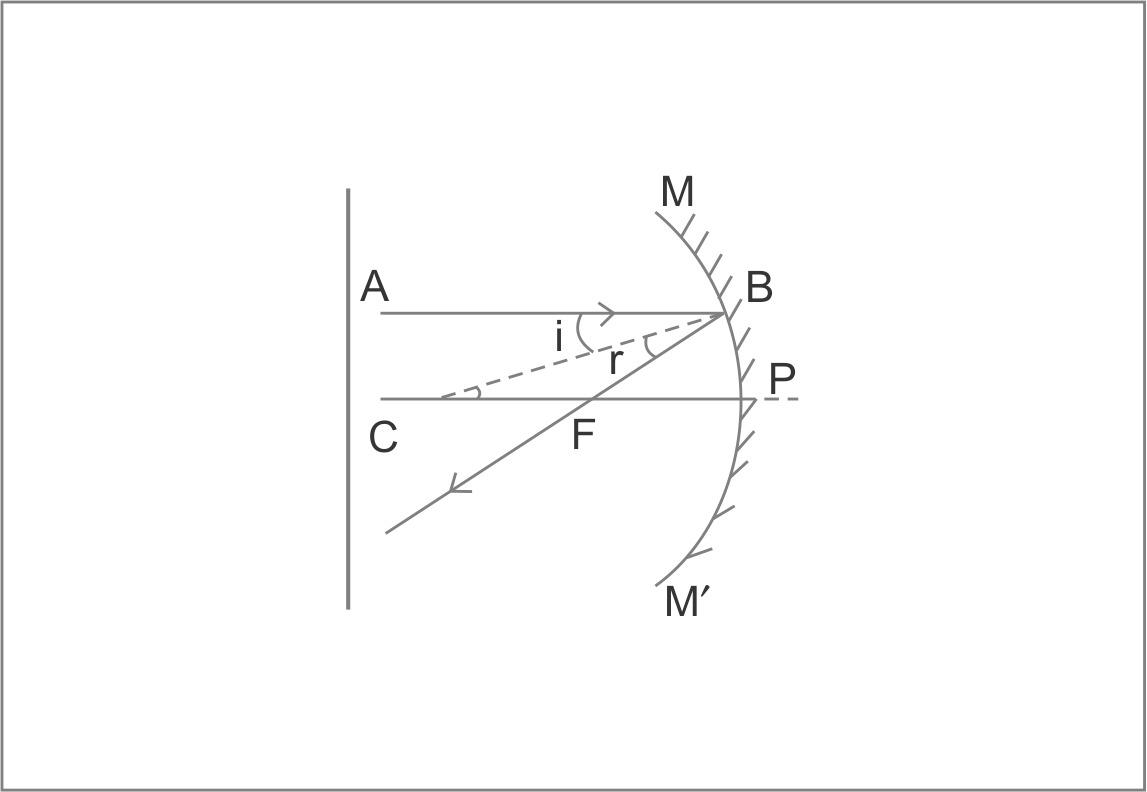
Radius of curvature of spherical mirror is:
A) Half of focal length
B) Double of focal length
C) Equal to focal length.
D) No relation.
Answer
147k+ views
Hint: In this as we know that the spherical lens is a part of a spherical mirror. The relation between focal length of a spherical lens and the radius of a spherical lens is calculated by understanding the sign convention.
Complete step by step answer:
As we know that the center of a spherical mirror or the lens is known as the center of curvature of that mirror or lens. The radius of a spherical mirror or lens is defined as the distance between the centre of curvature to the circumference of the curvature.
The figure below represents the sketch diagram of a curved surface (mirror or lens).

As we can see in the above figure
From the geometry of the Figure it is clear that,
Further we can conclude that,
Also,
From the diagram we can write that,
Now we substitute
After simplification we get,
Now substitute
Here,
It is clear from the above expression that the radius of curvature of a spherical lens is twice the focal length of the lens.
Therefore, the correct option is (B).
Note: In this question the diagram of the spherical lens should be made clear and the basic knowledge of geometry is applied. The main concept in this question is substitution of various data (distance) from the diagram. If this substitution goes wrong the answer will be wrong.
Complete step by step answer:
As we know that the center of a spherical mirror or the lens is known as the center of curvature of that mirror or lens. The radius of a spherical mirror or lens is defined as the distance between the centre of curvature to the circumference of the curvature.
The figure below represents the sketch diagram of a curved surface (mirror or lens).

As we can see in the above figure
From the geometry of the Figure it is clear that,
Further we can conclude that,
Also,
From the diagram we can write that,
Now we substitute
After simplification we get,
Now substitute
Here,
It is clear from the above expression that the radius of curvature of a spherical lens is twice the focal length of the lens.
Therefore, the correct option is (B).
Note: In this question the diagram of the spherical lens should be made clear and the basic knowledge of geometry is applied. The main concept in this question is substitution of various data (distance) from the diagram. If this substitution goes wrong the answer will be wrong.
Recently Updated Pages
How to find Oxidation Number - Important Concepts for JEE

How Electromagnetic Waves are Formed - Important Concepts for JEE

Electrical Resistance - Important Concepts and Tips for JEE

Average Atomic Mass - Important Concepts and Tips for JEE

Chemical Equation - Important Concepts and Tips for JEE

Concept of CP and CV of Gas - Important Concepts and Tips for JEE

Trending doubts
JEE Main 2025 Session 2: Application Form (Out), Exam Dates (Released), Eligibility, & More

JEE Main Exam Marking Scheme: Detailed Breakdown of Marks and Negative Marking

JEE Main 2025: Derivation of Equation of Trajectory in Physics

Electric Field Due to Uniformly Charged Ring for JEE Main 2025 - Formula and Derivation

JEE Main Participating Colleges 2024 - A Complete List of Top Colleges

Degree of Dissociation and Its Formula With Solved Example for JEE

Other Pages
JEE Advanced Marks vs Ranks 2025: Understanding Category-wise Qualifying Marks and Previous Year Cut-offs

JEE Advanced 2025: Dates, Registration, Syllabus, Eligibility Criteria and More

JEE Advanced Weightage 2025 Chapter-Wise for Physics, Maths and Chemistry

Electric field due to uniformly charged sphere class 12 physics JEE_Main

Learn About Angle Of Deviation In Prism: JEE Main Physics 2025

Ideal and Non-Ideal Solutions Raoult's Law - JEE




